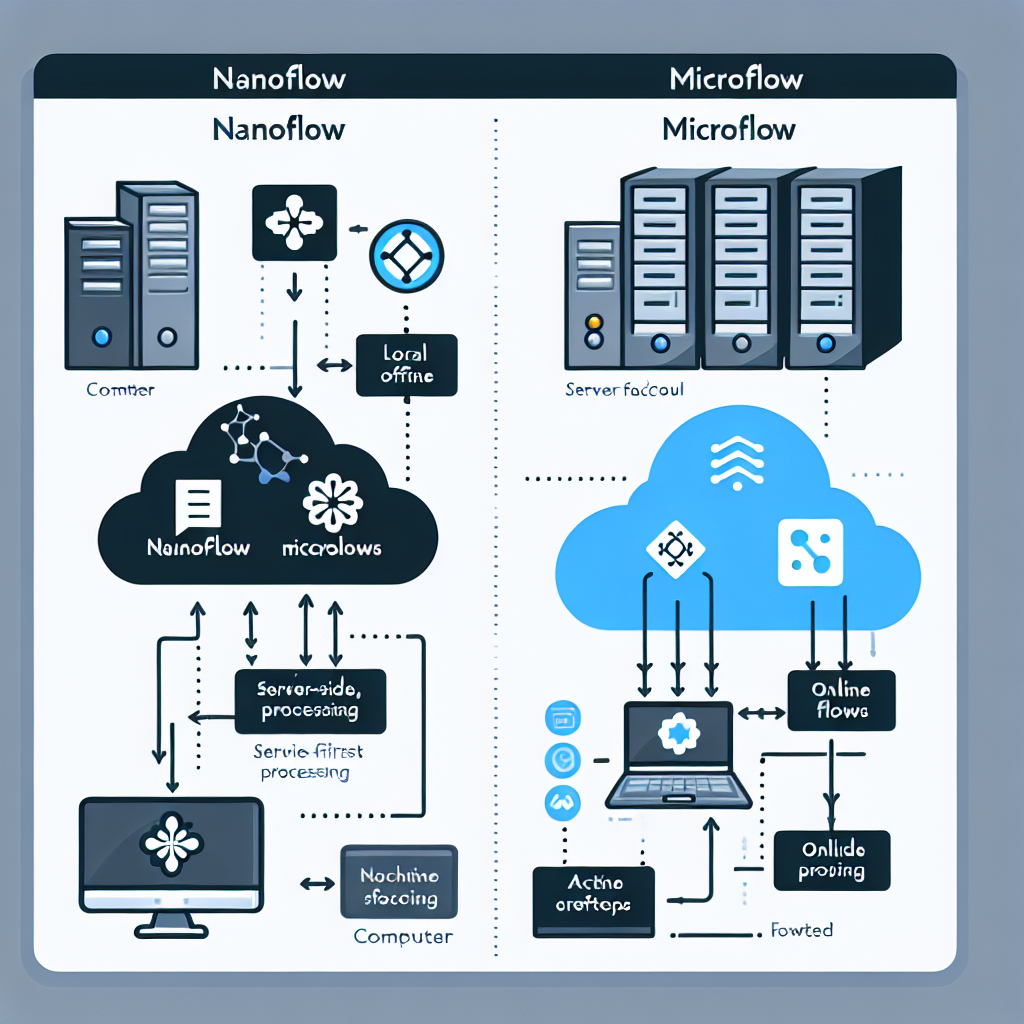Understanding the Differences Between Nanoflows and Microflows in Mendix

In the realm of Mendix, a leading low-code development platform, developers often encounter two essential concepts: nanoflows and microflows. Both are pivotal in automating processes and defining logic within applications, yet they serve different purposes and operate in distinct environments. Understanding the differences between nanoflows and microflows is crucial for developers aiming to optimize their applications effectively. This article delves into the characteristics, use cases, and differences between these two types of flows in Mendix.
What are Microflows?
Microflows in Mendix are server-side logic flows that allow developers to automate complex processes and operations. They are akin to traditional programming functions but are designed using a visual interface, making them more accessible and easier to maintain. Microflows can be used to perform a wide array of tasks, including:
- Database Operations: Create, read, update, and delete (CRUD) operations on the database.
- Integration: Interact with external systems and services through REST or SOAP APIs.
- Complex Logic: Implement conditional logic and loops to handle intricate business rules.
- Error Handling: Manage exceptions and errors that occur during execution.
Characteristics of Microflows
- Server-Side Execution: Microflows run on the server, meaning they can access and manipulate data stored in the Mendix database.
- Security: Since they execute on the server, microflows benefit from server-side security measures, reducing the risk of exposing sensitive data.
- Performance: Suitable for processes that require heavy data manipulation or integration with external systems.
- Scalability: Designed to handle larger workloads, making them ideal for operations that involve significant data processing.
What are Nanoflows?
Nanoflows, on the other hand, are client-side logic flows introduced to enhance the user experience by allowing certain processes to be executed directly on the client’s device. This capability makes nanoflows particularly useful for operations that need to be quick and responsive. Typical use cases for nanoflows include:
- UI Interactions: Update user interface elements instantly without server round-trips.
- Validation: Perform client-side validation to provide immediate feedback to users.
- Device Capabilities: Access device-specific features such as geolocation or local storage.
Characteristics of Nanoflows
- Client-Side Execution: Nanoflows execute on the client’s device, which allows for faster interactions since they do not require communication with the server for execution.
- Limited Data Access: They can only access data that is available on the client side, which means they cannot directly interact with the server-side database.
- Improved User Experience: By reducing server round-trips, nanoflows can significantly enhance the responsiveness of applications.
- Offline Support: Nanoflows can be used in offline scenarios, allowing applications to function even without a network connection.
Key Differences Between Nanoflows and Microflows
- Execution Environment:
- Microflows: Execute on the server, making them suitable for operations that involve server-side data and processing.
- Nanoflows: Execute on the client, ideal for enhancing user interactions and performing tasks that do not require server communication.
- Data Access:
- Microflows: Have full access to the Mendix database and can perform complex data manipulations.
- Nanoflows: Limited to the data available on the client, focusing on improving the user interface and experience.
- Performance Considerations:
- Microflows: Better suited for tasks that need heavy data processing or involve external integrations.
- Nanoflows: Provide faster execution for tasks that can be completed on the client side, reducing latency.
- Use Cases:
- Microflows: Ideal for backend operations, such as data processing, integrations, and business logic implementation.
- Nanoflows: Best for frontend tasks, like real-time UI updates, client-side validations, and offline capabilities.
- Security:
- Microflows: Benefit from server-side security, making them more secure for handling sensitive data.
- Nanoflows: While faster, they require careful consideration of data security since they run on the client side.
Conclusion
Both nanoflows and microflows are integral components of Mendix that serve distinct purposes within the application development process. Understanding their differences and appropriate use cases is essential for developers to build efficient, responsive, and secure applications. By leveraging the strengths of each, developers can create powerful applications that provide seamless user experiences while maintaining robust backend operations. Whether enhancing user interactions with nanoflows or managing complex server-side processes with microflows, the right choice can significantly impact the performance and effectiveness of Mendix applications.
